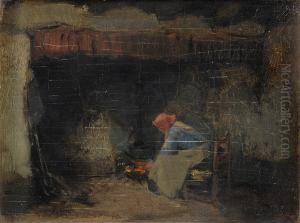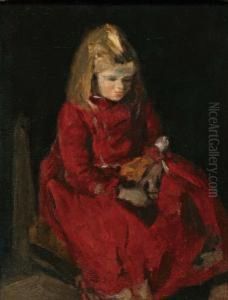Emanuelus Samson Van Beever Paintings
Emanuelus Samson Van Beever, born in 1824 in Belgium, emerged as a noteworthy figure within the 19th-century European art scene. His life spanned a period of significant change in the art world, witnessing the transition from the Romanticism of the early 19th century to the burgeoning movements of Impressionism and Post-Impressionism in his later years. Despite the scant details on his early life and education, it is inferred from the style and subjects of his work that Van Beever received a classical art education, likely immersed in studying the human form, landscapes, and religious subjects, which were predominant in the academic training of the era.
Van Beever's oeuvre is characterized by meticulous attention to detail, a hallmark of traditional academic painting, yet his work also hints at the evolving tastes and styles of his time. He adeptly navigated the shifting art landscape by incorporating elements of realism and naturalism into his compositions. His paintings often depicted serene landscapes, daily life, and historical scenes, executed with a precision and clarity that captured the essence of his subjects. Though not as widely recognized as some of his contemporaries, his work was appreciated for its technical skill and emotive quality, securing him a place in European art galleries and private collections.
Throughout his career, Van Beever remained somewhat of an enigmatic figure, not aligning himself with any particular art movement but rather focusing on honing his craft and exploring various subjects. His reluctance to join more avant-garde movements may have contributed to his relative obscurity in art historical narratives, yet it also allowed him the freedom to develop a distinct style that straddled the traditional and the modern.
Emanuelus Samson Van Beever passed away in 1916, leaving behind a legacy that, while not as celebrated as that of some of his peers, represents an important bridge between the art of the past and the innovations that would define the 20th century. His works continue to be studied and appreciated for their contribution to the rich tapestry of European art, offering insights into the transitional period of the late 19th and early 20th centuries.

